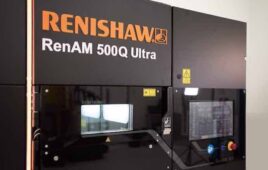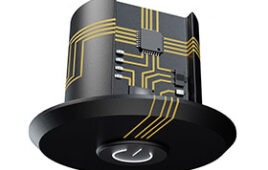It seems like you can’t go a week without a news report about how 3D printing technology is going to change the world. And it isn’t that 3D printing isn’t making waves, but since the technology was first conceived in the 1980s, its effects have been concentrated within a few spheres.
Still, those small-scale revolutions have been taking place in several industries as a result of 3D printing. Whether for good or for ill, the ability to execute digital designs with the click of a button is a driving force of innovation and change. Perhaps more interesting, however, is the breadth of industries worldwide currently being shaped by this technology. From fashion to aerospace, the effects of 3D printing are cropping up in unexpected and exciting ways.
In layman’s terms, 3D printing is a process used to create a three-dimensional object based on a digital file. To do this, tiny layers are printed one over the other until a complete structure is formed. Typically these thin layers are made of plastic filament or photopolymer resin. Working in tiny layers, the object is then built layer by layer based on the specifics on the digital file.
Let’s take a closer look at some of the more interesting ways 3D printing has been shaping today’s industries.
Fashion
The fashion world is never one to miss the chance to incorporate the new and the daring. The first 3D-printed dresses began to appear on the runways of New York Fashion Week in 2013, brought forth by the trio of designers known as threeASFOUR. The dresses were lauded for their playful combination of texture and mixing an ethereal sensibility with the stark angularity that defines the modernist aesthetic.
There was only one problem, as Bradley Rothenberg, architect and collaborator on the dress, explained to Wired: “The model [who] was wearing it hated us.”
It turns out, the dress was so delicate that if the model had sat, she would have actually shattered it.
Still, that hasn’t stopped designers like Gabi Asfour from experimenting. The key, he says, is finding a way to recreate the pliability of traditional fabric. In their latest collection, at least the former has been achieved—threeASFOUR’s newest items allow their wearers to sit down. Still, there is little hope of widespread 3D clothing being printed until both the aforementioned conditions—pliability and durability—are met.
Aerospace
3D printing has emerged as one of the prominent tools for engineering airplane parts, thanks to its ability to create lightweight, sturdy products. The exacting way it prints layer by layer, and only where necessary, means that suddenly, parts such as injection molding, composite tooling, and jibs are lighter than ever before.
This reduction of weight means that planes will likely need to use far less fuel in their flights, an increasingly important issue given the rising pressure to cut back on emissions. In addition, 3D printing technologies have the capacity to work on an incredibly large scale, meaning they’re uniquely suited for large aircraft and other such products.
And aircraft corporations have noticed.
Recently, Boeing has announced that they are looking to create the first 3D-printed titanium structural components from an airplane with the assistance of Norsk Titanium. If they’re successful, this could allow for a much simpler form of production with less wasted materials and reduced costs. This technology is currently under review by the Federal Aviation Administration (FAA).
Eldercare
Perhaps one of the most unexpected areas of development for the 3D printing industry has been the development of 3D-printed food, especially in the realm of eldercare.
As a person ages, certain ailments can make chewing food difficult. Whether this is a mechanical issue, such as dentures, or the loss of functionality as the result of a stroke or other neurological disease, the fact remains that many senior citizens need assistance in this area.
The traditional solution to this problem has been to puree or mince food, but more advanced methods include retextured food. The result of this is often an unappealing scoop of gelatinous or paste-like food served as a meal.
With 3D printing, that softer food can be retextured into shapes and colors in a way that is more appealing. Additionally, the 3D printing technology provides for a way to ensure that the right amount of vitamins and minerals is included in an individual’s diet.
Medical Care
Many different fields of medicine have adopted 3D printing technologies, thanks to their ability to produce complex pieces of equipment and custom-make items to fit perfectly to a specific patient. There are dozens of examples of 3D printing being used in medicine, from printed skin grafts to facial reconstruction. Still, there are three uses that stand out among the many medical applications.
1. Implants: Whether it is a hip or dental implant, the extreme flexibility and precision of 3D printing means that it’s often the best option for reproducing the unique shapes found in the human body, and at a much lower cost. That means that now, patients who might not have been able to afford implants could have a chance with 3D printing.
2. Custom Aid Devices: With 3D printing, devices like hearing aids are able to be produced in a way that specifically matches the anatomy of the patient. Existing digital templates are adjusted based on information and measurements gained by medical imaging. This allows a significantly more natural fit and a greater deal of discretion.
3. Prosthetics: While good prosthetic limbs can improve the independence and mobility of an individual, a shortage of prosthetists and the immense amount of time and effort it takes to create a custom prosthetic have made it very difficult to supply these important tools. Low-income communities and war-torn nations are suffering as a result of these issues. Fortunately, the ease of 3D printing is making great strides to fix this problem.
Architecture and Construction
3D printing is changing the way that architects and builders approach their jobs. HuaShang Tengda, a construction company in China, was able to build a full two-story home in around a month and a half by using 3D printing.
While this extreme is not industry standard yet, there are signs that the industry might be moving away from more traditional forms of construction. One California company, Contour Crafting, is using the idea to address the difficulty in low income housing, for example. And in Madrid, the world’s first 3D-printed footbridge was recently erected.
The results of 3D printing could be great for many construction companies, improving safety and reducing the amount of labor costs. But for now, most plans are to focus on 3D-printed components to be incorporated into homes.
Future of 3D Printing
While the effects of 3D printing are relatively limited for now, its future seems bright. Even now, strides have been made to reduce the amount of time it takes to print items, which could unlock the prospect of incorporating the technology into mass production. It’s easy to see just how much this technology has changed the world already. It’s safe to say we can look forward to more innovations in 3D printing in the near future. For now, however, we will have to be content with watching just how many changes this technology can bring to industries around the world.
Filed Under: 3D printing • additive • stereolithography, Industrial automation




